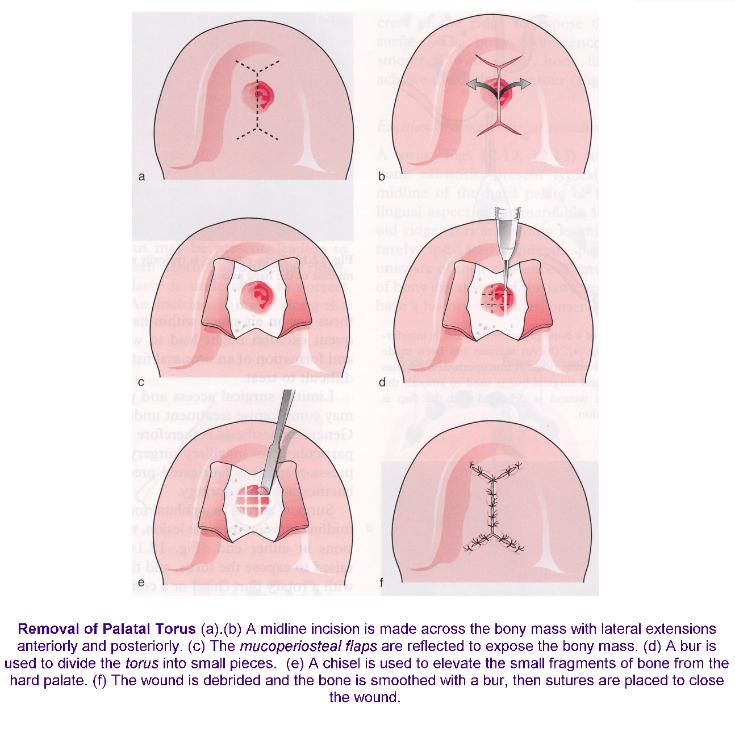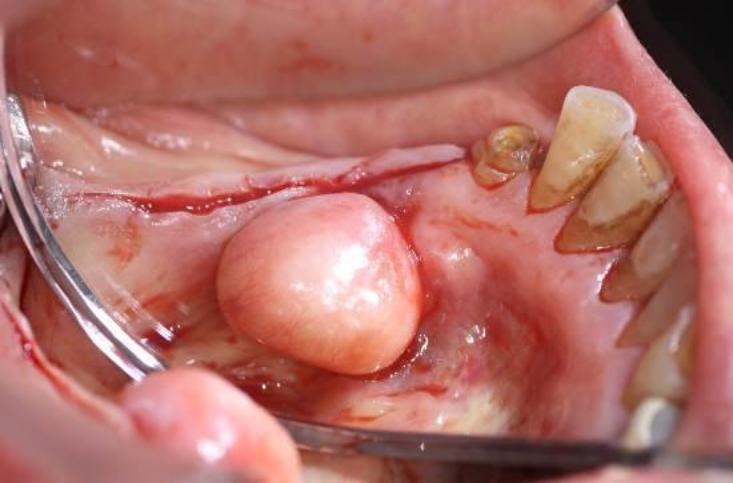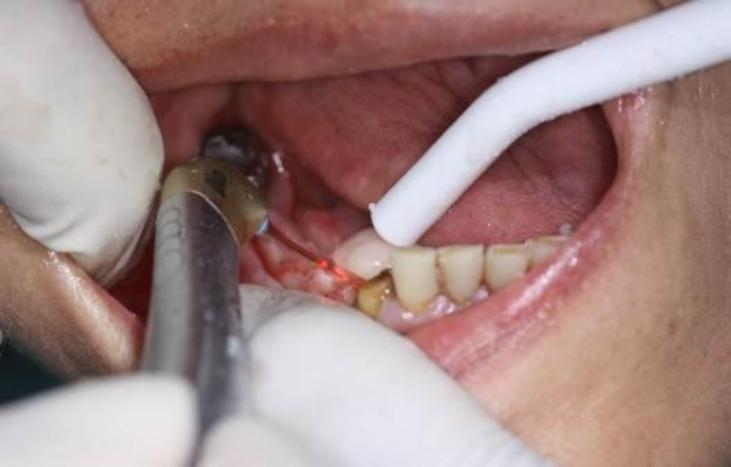Torus, Exostosis & Osteomata Removal
Occasionally, the oral bony swelling (torus, exostosis or osteoma) needs to be removed.
This can be for a number of reasons:
- Interference with construction of dentures
- Interference with the wearing of dentures
- Obstructive Sleep Apnœa
- Problems eating
- Problems speaking
- Aesthetic problems
- Psychological (cancerophobia)
- Exceptionally large torus
Surgical Considerations:
- Use LA to help “balloon” thin tissue (tumescent technique)
- Overlying mucosa is thin and is easily torn
- It is easier to remove tori when the dento-alveolus is œdentulous (toothless)
Remove Tori with:
- urgical drill / bur
- Osteotome and hammer
- A combination of both
Insure a dry field and inspect wound before closure.
Potential Pitfalls / Problems:
Palatal Tori
- Pneumatisation of palatal torus
- Thin mucosa over tori that can tear very easily
- Post-operative redundant tissue
Potential Complications – Palatal Tori
- Thin mucosa over tori that can tear very easily
- Post-operative redundant tissue
- Oro-antral / nasal communication / fistula
- Arterial bleeding (from the greater palatine artery)
- Hæmatoma (bruising)
- Post-op dehiscence (pulling apart of the wound margins)
Useful Articles & Websites
Compendium 2006. A Technique for Surgical Mandibular Exostosis Removal
J Oral Sci 2008. Excision of an Atypical Case of Palatal Bone Exostosis – A Case Report
Med Oral Patol Oral Cir Bucal. 2010. Current status of the torus palatinus & torus mandibularis
Rev Odontol UNESP 2014. Surgical Management of Palatine Torus – Case Series
Annals of Dent Specialty 2014. Surgical Removal of Palatal Bony Exostosis. A Case Report









